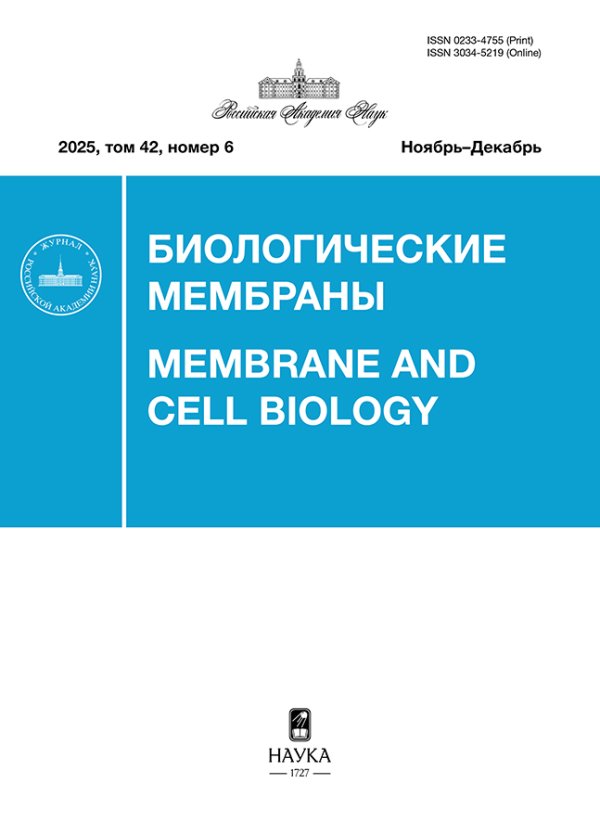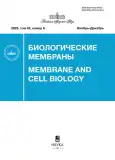Membrane and Cell Biology
Official journal homepage:
ISSN (print): 0233-4755
Media registration certificate: ПИ № ФС 77 – 77276 от 05.12.2019
Founder: Russian Academy of Sciences (RAS)
Editor-in-Chief: Kolesnikov Stanislav Sergeevich
Number of issues per year: 6
Indexation: RISC, RISC Core, Higher Attestation Commission list, RSCI, White List (3d level), Scopus, Web of Science Core Collection (Science Citation Index Expanded (SCIE))
The journal publishes both original experimental and theoretical works and reviews that highlight the physicochemical aspects of membrane and cell biology: molecular mechanisms of membrane transport, receptor systems and intracellular signaling, cellular functions and pathologies associated with cell membranes, as well as fundamental biomedical research, including those devoted to membrane aspects of physiology, pharmacology, and immunology.
The journal was founded in 1984.
Current Issue
Vol 42, No 6 (2025)
ОБЗОРЫ
The Role of Cx43 in the Survival and Death of Neurons and Glial Cells in Injuries of the Central and Peripheral Nervous System
Abstract
 441–464
441–464


Articles
Functional Role of Piezo1 Channels in Smooth Muscle Cells of Rat Cerebral Arteries in Normal Conditions and in Chronic Carotid Artery Stenosis
Abstract
 465-474
465-474


Morphofunctional Evaluation of Rat Leg Muscles under the Influence of Hindlimb Unloading, Tenotomy, and Denervation
Abstract
 475-487
475-487


Influence of Microsomal Rafts on DNA Import into Mitochondria of Potato Tubers (Solanum tuberosum L.)
Abstract
 488–494
488–494


Antioxidant Mito-TEMPO Partially Prevents Rat Soleus Muscle Atrophy after 7 Days of Functional Unloading
Abstract
 495–503
495–503


X-Domain of nsp-3 Protein of the SARS-CoV-2 Coronavirus Is Capable of Deforming Membranes and Initiating of the Double-Membrane Vesicle Formation Depending on the Cholesterol Content
Abstract
 504-512
504-512












